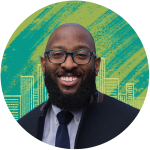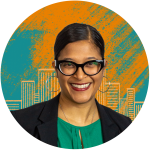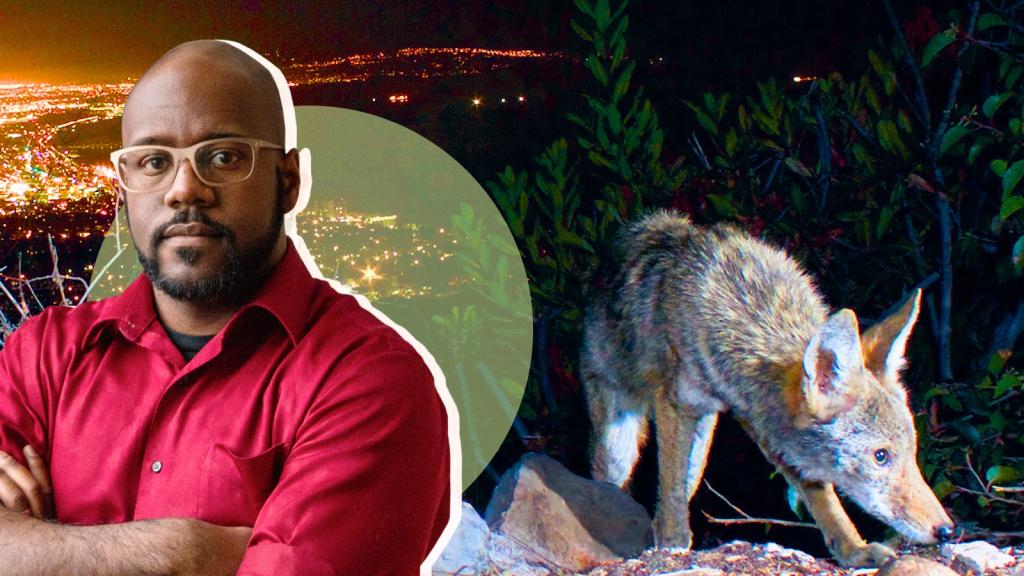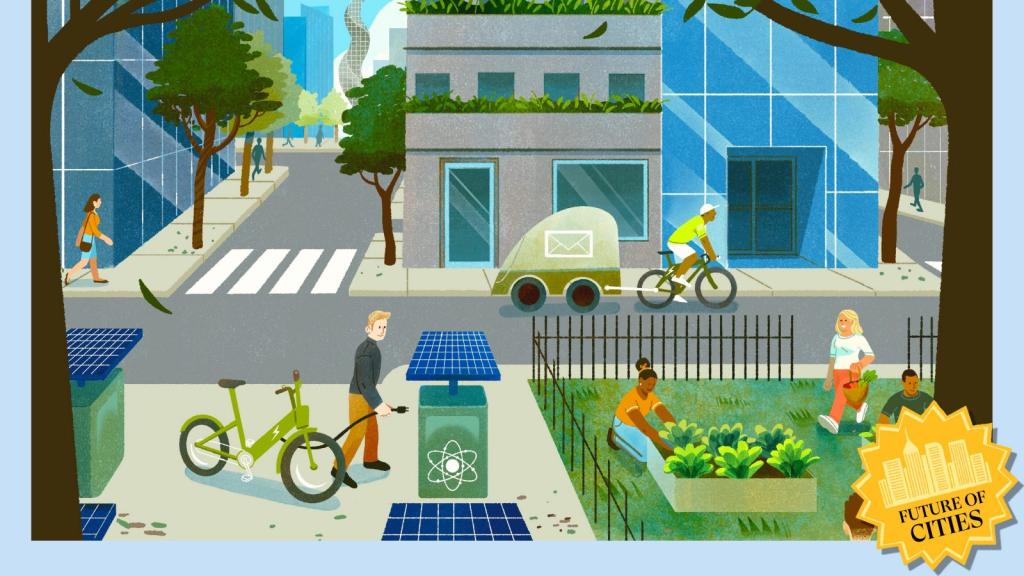As the climate changes, cities must change with it. Fix is exploring how our urban centers are being reimagined and what green, equitable, and resilient communities could look like. With insights from local officials, architects, residents, and more, our Sustainable Cities of the Future series examines how we’ll live, work, and play in the cities of tomorrow. (Explore the full series so far.)
Roughly 83 percent of the U.S. population lives in cities. That’s some 270 million people, a statistic that bodes well for the planet because urban density facilitates, even encourages, more energy- and resource-efficient ways of living. Municipalities large and small, and the people who design and govern them, hold great power over what the future will look like. The plans they draft today will shape the buildings we live and work in, the transportation networks we rely on, and the resources like water, energy, and public spaces we use tomorrow.
The power of city hall to influence these fundamental aspects of life is an increasingly important tool for combating climate change, promoting sustainability, and advancing environmental justice.
Ensuring that everyone has access to clean water and air, abundant public green spaces, viable mobility options, comprehensive disaster preparedness and relief, and reliable energy is key to creating a truly sustainable future. Although federal policy and international agreements certainly play a role in creating such a world, it’s local governments that see the impacts of the climate crisis firsthand and provide the essential services people need to carry on their lives.
“It’s very challenging in government to really be connected to communities, but it’s much more doable at the local level,” says Leah Bamberger, director of sustainability for Providence, Rhode Island. “This work is so contingent upon relationships that working at a smaller scale, closer to the ground, makes a lot of sense.”
That’s one reason metropolitan areas led the way on climate action after former President Trump announced his intention to abandon the Paris Climate Agreement. His decision prompted pledges from more than 450 mayors to uphold the goals of that global accord. Cities nationwide crafted comprehensive plans like New York City’s Green New Deal and Providence’s Climate Justice Plan that aimed to keep their cities moving toward the policies those communities needed.
In recent years, a growing number of cities have used their levers of power to elevate these issues and foster change. Many of them are creating positions, and even entire departments, to lead those efforts. The Urban Sustainability Directors Network, which started with just a handful of people in 2009, today boasts over 200 members representing communities throughout the U.S. and Canada.
“With an engaged federal government, engaged cities, and the ability to prioritize equity and inclusion, this is the moment,” says Mark Chambers, who led New York City’s sustainability office and is now part of the Biden administration. “It’s going to be incredibly exciting to witness what’s possible in the next decade.”
To that end, Fix spoke with five officials from cities across the U.S. about the most important trends they’re seeing within city governments around sustainability and equity, and how cities can continue to push us forward. Their comments have been edited for length and clarity.
Mark Chambers, senior director for building emissions at the White House Council on Environmental Quality; former director of the New York City Mayor’s Office of Sustainability
“When we’re dealing with the most pernicious parts of a changing climate, it comes down to protecting people.”

When you’re working in climate, you have to acknowledge that we’re trying to protect our future — and everyone must be able to participate in that future. The work you do now to protect people really matters.
Last summer was the hottest on record in the Western hemisphere. Because we were also in the middle of a pandemic, our most vulnerable residents in New York were not going to have access to air-conditioned museums, to cooling centers, to other places where they could go get some relief. We had to quickly establish an entire operation to deliver and install 75,000 free air-conditioning units. In some ways that may seem counterintuitive — we were increasing the electricity load by putting in additional AC units. But that’s why codes and standards matter: to make them as efficient as possible. All of these things are integral, but when we’re dealing with the most pernicious parts of a changing climate, like extreme heat, it comes down to protecting people.
Cities have operated over the last several years in some degree of isolation when it comes to climate. They have not received support from the federal government, and as a result, they have banded together. The networks between cities are stronger than I’ve ever seen. That’s amazing, because it means that cities are more resilient and have the ability to simultaneously push on the same efforts to reach the scale that’s necessary.
Leah Bamberger, director of sustainability for the city of Providence, Rhode Island
“We had just released this bold vision, and yet we were still in the status quo.”

Often in U.S. cities, sustainability offices are very small; in a lot of cases, it’s a position of one. So we really look to our peers through the Urban Sustainability Directors Network. That network has grown tremendously over the years, connecting cities and towns and now counties throughout the U.S. and Canada. And it started out in the early 2000s as maybe 15 people who were like, “We need to talk to each other!”
Equity has been a key focus of that for the last number of years. I’ve had the opportunity to share our work in Providence all across the country, from Anchorage, Alaska, to Boulder, Colorado. We released our Climate Justice Plan in 2019, and now we’re working to institutionalize and codify that in key decision-making documents, like zoning ordinances, to make sure the plan lives beyond this administration.
I’ll give you an example. After the plan was released, we started hearing about a proposal for a waste-transfer station in South Providence — one of our primary environmental justice communities, already overburdened by traffic congestion, pollution, and industry.
There was a lot of opposition to this development, but at first look, it seemed like it was going to be allowed under our zoning code. That was a huge blow. We had just released this bold vision, and yet we were still in the status quo. I was concerned about the loss of trust with the community that we had developed the plan with. Fortunately, because we had just made these commitments to climate justice, the mayor’s office directed the planning department to look closely and find out if we had any ability to influence this decision. They found language that allowed us to soundly defeat the proposal and stop the waste-transfer station in its tracks.
We got lucky in that case. But it goes to show how important it is that we do the sort of wonky work to make sure this isn’t a plan that just sits on a shelf but is embedded in documents and laws that guide decision-making.
Help us imagine the sustainable cities of the future. We want to hear what you’re seeing today that’s exciting, or your biggest ideas for the future.
Desirée Williams-Rajee, owner of Kapwa Consulting; former equity specialist for the City of Portland Bureau of Planning and Sustainability in Oregon
“When you give people who are public servants the skills to actually facilitate change, it’s very powerful.”

Sustainability professionals have to be entrepreneurial, because they’re often underfunded. They’re pulling together all their resources, trying to be collaborative and use partnerships to move forward efforts on climate change. it can be frustrating for folks, particularly if they don’t come from an institutional background, to discover how slowly things happen. When the urgent need for change is what drives you, it feels like an uphill battle. But most people in government are there because they believe in public service. They believe that by working in government, they can help make a difference. When you give people who are public servants the skills to actually facilitate change, it’s very powerful.
I think some of the most exciting things that we’re seeing now have to do with economics. The Portland Clean Energy Fund is an amazing model that communities around the nation should be looking at. It’s not going to be possible everywhere, but it created a financial vehicle to be able to invest in the change. It’s basically a tax on major corporations that will generate between $50 and $75 million a year, to be invested in clean energy projects. If every community had a fund like that, how transformative would that be for climate and for equity? That is a restorative and reparative effort.
>> Read more about Desirée Williams-Rajee on the 2020 Grist 50 list of emerging leaders
Chris Castro, director of sustainability and resilience for the city of Orlando, Florida
“We want to be at the cutting edge of the clean energy revolution — and that presents exciting economic development and job-creation opportunities.”

With Orlando being the home of Epcot — the original “Experimental Prototype Community of Tomorrow” — we obviously have high expectations placed on us. We are committed to becoming America’s premier green and future-ready city. One of the things Orlando has started to pioneer is floating solar, or “floatovoltaics.” I often joke that Orlando is kind of like an Atlantis in reverse — there’s so much water around us that it kind of seems a bit odd. We manage our rainwater in Florida by building stormwater-retention ponds. They don’t provide a lot of value other than holding stormwater, so we’ve started to partner with our utility to create solar arrays that float. We now have over a megawatt and a half of floating solar. We’re starting to see surrounding townships and other local governments install them at wastewater treatment plants and other facilities.
We want to be at the cutting edge of the clean energy revolution — and that presents really exciting economic development and job-creation opportunities here locally. This transition could be one of the best wealth creators for the communities that have been disproportionately impacted by a lot of the development over the last hundred-plus years.
I had been leading our equity work here in Orlando for the last three years — doing monthly equity workshops, looking at every policy and program we were bringing forward through a racial equity lens, and training my staff in foundations for equity. We proposed to Mayor Buddy Dyer that we center this work across the entire city. Since then, Orlando has hired our first chief equity official, Merchon Green, and begun working on several strategies to address inequities, including energy burden, food access and insecurity, attainable housing, the digital divide, and more.
I will be working closely with her to weave in equity across the entire city government, in the same way that I’ve been weaving in sustainability across not just city operations, but the entire culture of our community.
>> Read more about Chris Castro on the 2017 Grist 50 list
Angela Tovar, chief sustainability officer for the city of Chicago
“If we don’t center environmental priorities on equity and acknowledge historic harms, then we’re not building for the future.”

2020 was a year when we saw very deep, systemic racial inequalities finally exposed, in the midst of a pandemic and as we’re seeing the compounding impacts of climate change. Chicago also saw tremendous budget shortfalls and the economic downturn of many sectors. When you put these things together, within the context of environment and sustainability priorities, now more than ever becomes the time when we must put forth an agenda centered on justice and equity.
I’m new to the public sector, coming from a long career in environmental justice at the community level. I think that’s very important, because you lift up policy priorities that are important to your community. Communities have a very strong vision of what they see as their climate future. There is a lot of advocacy in those spaces to try to move various resources and pots of funding, but you really have to count on and work in collaboration with partners in city government. Now I’m on the other side of the table.
We can’t separate our climate work from our environmental justice work. Cities have played a role in some of the deep disparities that we’ve seen. Harmful tactics like redlining, for example, have led to poor environmental outcomes in cities throughout the country. Building for the future depends on acknowledging those past harms, listening and learning from our frontline communities, and building out this new ecosystem that addresses that.
I see so much opportunity in the clean and renewable energy transition for our city. I see so much opportunity for us in the building decarbonization space, and in supporting the Chicago Transit Authority to meet their goal of electrifying all our buses by 2040. All of these exciting environmental priorities are going to lead to a healthier, better city that will improve quality of life. But if we don’t center that on equity and acknowledge those historic harms, then we’re not building for the future.
Explore more in our series on Sustainable Cities of the Future:
>> An AI plots to take over a community’s solar power in this short story
>> Follow along with the full series so far



